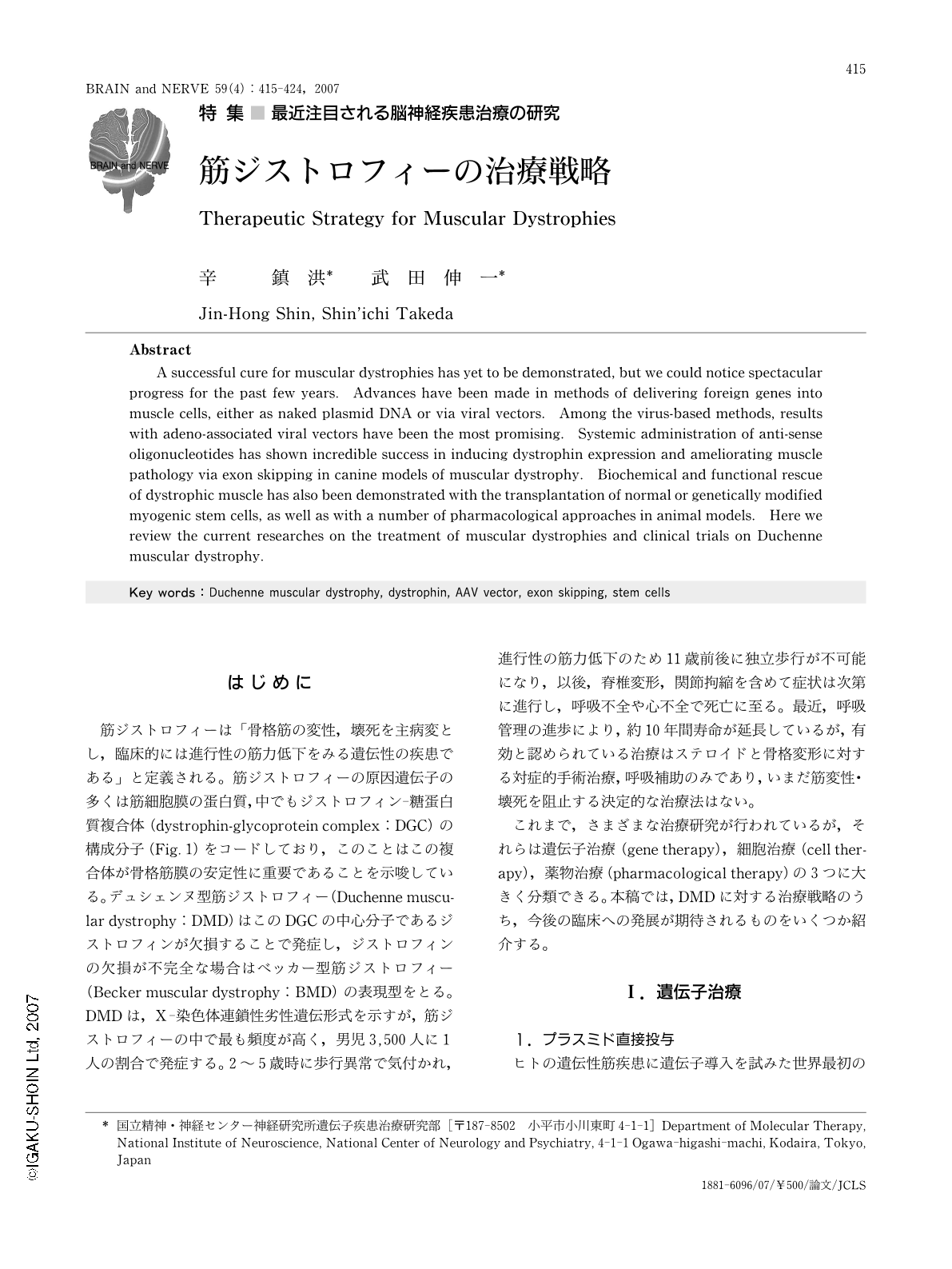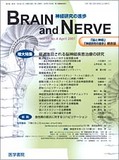Japanese
English
- 有料閲覧
- Abstract 文献概要
- 1ページ目 Look Inside
- 参考文献 Reference
はじめに
筋ジストロフィーは「骨格筋の変性,壊死を主病変とし,臨床的には進行性の筋力低下をみる遺伝性の疾患である」と定義される。筋ジストロフィーの原因遺伝子の多くは筋細胞膜の蛋白質,中でもジストロフィン-糖蛋白質複合体(dystrophin-glycoprotein complex:DGC)の構成分子(Fig. 1)をコードしており,このことはこの複合体が骨格筋膜の安定性に重要であることを示唆している。デュシェンヌ型筋ジストロフィー(Duchenne muscular dystrophy:DMD)はこのDGCの中心分子であるジストロフィンが欠損することで発症し,ジストロフィンの欠損が不完全な場合はベッカー型筋ジストロフィー(Becker muscular dystrophy:BMD)の表現型をとる。DMDは,X-染色体連鎖性劣性遺伝形式を示すが,筋ジストロフィーの中で最も頻度が高く,男児3,500人に1人の割合で発症する。2~5歳時に歩行異常で気付かれ,進行性の筋力低下のため11歳前後に独立歩行が不可能になり,以後,脊椎変形,関節拘縮を含めて症状は次第に進行し,呼吸不全や心不全で死亡に至る。最近,呼吸管理の進歩により,約10年間寿命が延長しているが,有効と認められている治療はステロイドと骨格変形に対する対症的手術治療,呼吸補助のみであり,いまだ筋変性・壊死を阻止する決定的な治療法はない。
これまで,さまざまな治療研究が行われているが,それらは遺伝子治療(gene therapy),細胞治療(cell therapy),薬物治療(pharmacological therapy)の3つに大きく分類できる。本稿では,DMDに対する治療戦略のうち,今後の臨床への発展が期待されるものをいくつか紹介する。
Abstract
A successful cure for muscular dystrophies has yet to be demonstrated, but we could notice spectacular progress for the past few years. Advances have been made in methods of delivering foreign genes into muscle cells, either as naked plasmid DNA or via viral vectors. Among the virus-based methods, results with adeno-associated viral vectors have been the most promising. Systemic administration of anti-sense oligonucleotides has shown incredible success in inducing dystrophin expression and ameliorating muscle pathology via exon skipping in canine models of muscular dystrophy. Biochemical and functional rescue of dystrophic muscle has also been demonstrated with the transplantation of normal or genetically modified myogenic stem cells, as well as with a number of pharmacological approaches in animal models. Here we review the current researches on the treatment of muscular dystrophies and clinical trials on Duchenne muscular dystrophy.

Copyright © 2007, Igaku-Shoin Ltd. All rights reserved.


